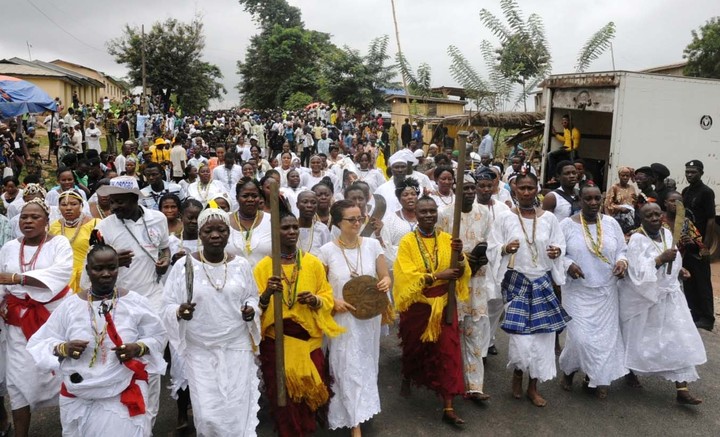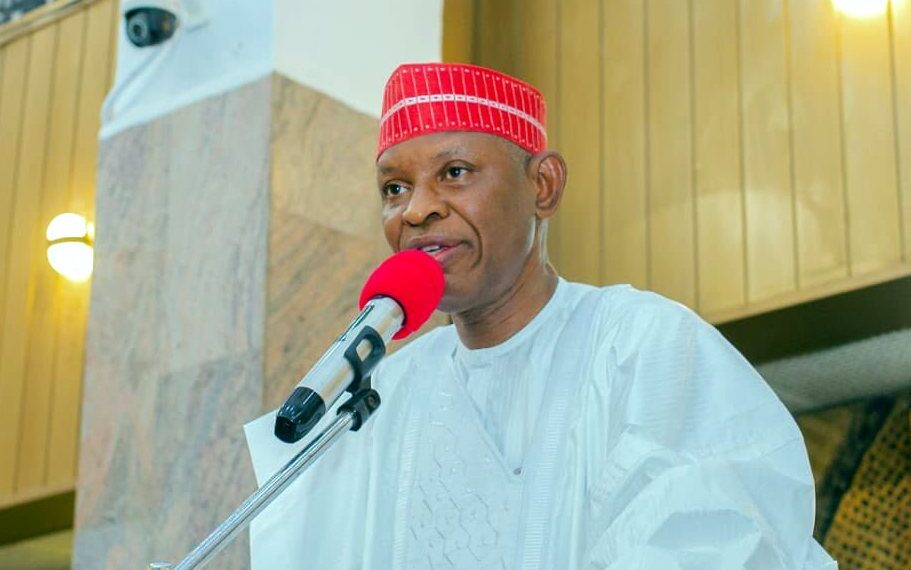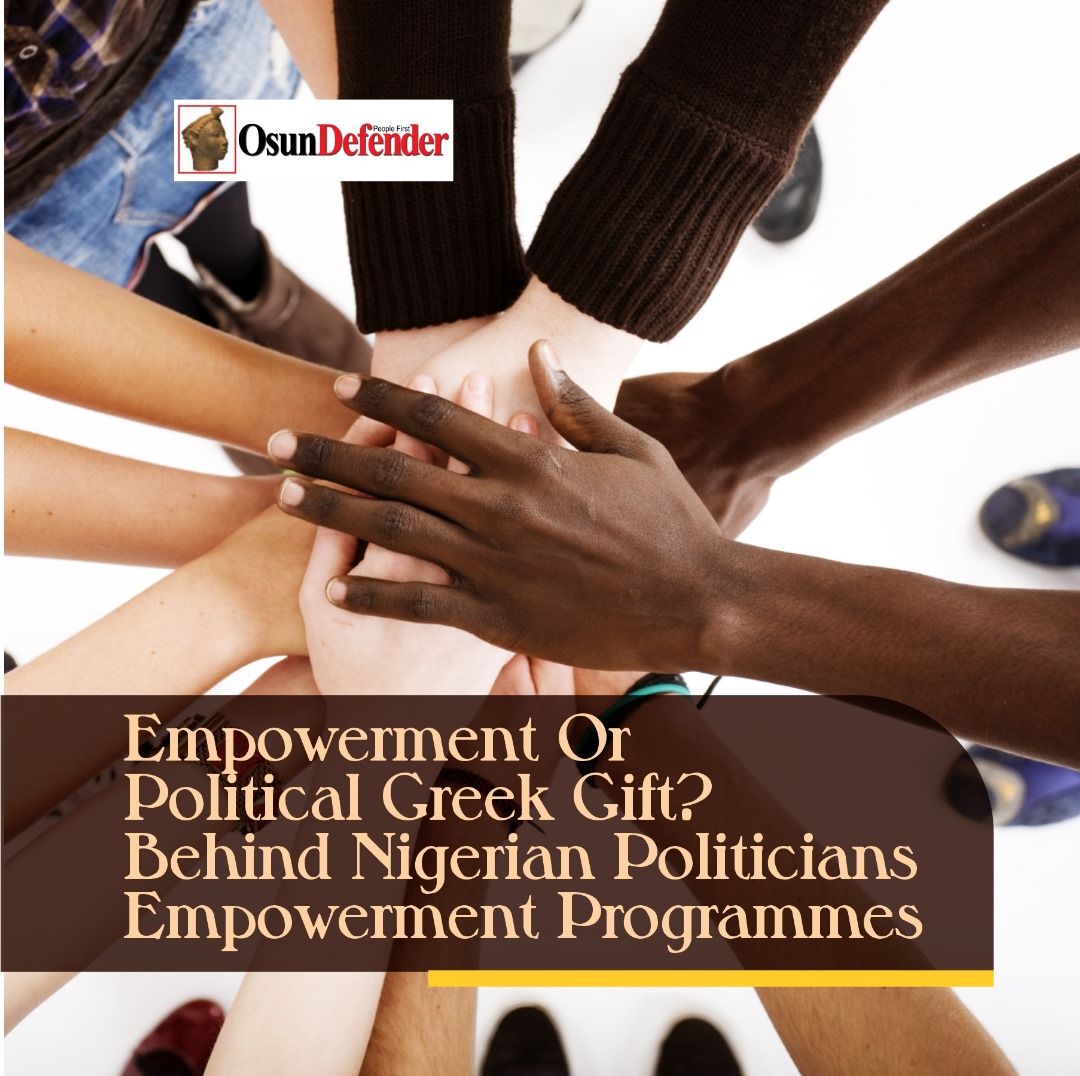Osun Osogbo Grove has been recognised as a World Heritage Site by the United Nations Educational, Scientific and Cultural Organisation (UNESCO), having gained popularity within and outside Nigeria. Noted for its rich cultural, economic and religious values, Osun Osogbo festival is annually celebrated by the people of Osogbo, capital of the State of Osun and the world at large. SHINA ABUBAKAR traces the background of the festival and its place in history.
Centuries ago when the founding fathers of Osogbo were reaching a treaty with the water goddess over the rightful owners of the land space within the Osun groove, little did they know that centuries after, the treaty would eventually become an annual rite which would be embraced by the entire Yoruba race thus, leading to the adoption of the space by the United Nations as a world heritage site, thereby launching the host community, Osogbo into universal map and attracting tourists annually.
The treaty over space between the human and mermaid brokered peace and laid the foundation for the annual Osun Osogbo festival, as most of the agreement reached then include; helping the women to be fertile, making readily available the scarce water that was making the populace to suffer and helping protect the community from any aggressive invasion. The people in return dedicated a period to celebrate the peaceful co-existence between man and mermaid.
In the early times, the celebration is just a mere ritual revolving around two individuals, the Ataoja of Osogbo, who was a beneficiary of the treaty and the virgin-maiden, who bears the calabash to and from the shrine. However, many of the tourists or visitors only understand the festival to be a one day event which is the visit to the river, but the festival is a one month event which covers, spiritual, traditional and cultural activities. Besides, a deep involvement in the festival further showed that it did not just revolved around two individuals, but the stakeholders include many compounds and several other personalities. The remarkable events that precede the visitation to the river are given adequate attention and discussed to familiarise all with what the celebration involves.
The Odun-Ifa Oba
For initiates, Osun-Osogbo festival is heralded with the celebration of the corpus of the Ataoja, where priest would embarked on the clearance of Ifa Shrine after which the Araba Awo would lead the other Ifa Priest to the monarch’s compound to embark on divination for him, bring the divine messages of the gods for the year and further bath his corpus before celebrating the new year message. This usually happen in the absence of the monarch who is represented by the King’s Hands and Chiefs in the palace. Prior to the celebration, afterwards, his wives would go to the compound bearing calabash with kolanuts for divinity and later dance back to the palace, escorted by the priest with a view to conveying the gods’ messages to the palace. The Araba would later lead the priests back to the palace in the night for other rituals to keep the monarch cleanse for the approaching festival.
This singular celebration which is preceded by the Ilagbe is a major event celebrated by all Ifa priests in Osogbo and it is made obvious by the Aso-ebi that is usually chosen to celebrate the event. Once this commences, in the mind of all initiate, the Osun Osogbo is fast approaching and the Araba becomes busy hosting priests for different propitiation for the development of the town. One conspicuous fact is that the destiny of Osogbo is always tied to the Ataojas going by the various traditional rites that priests embarked upon for the royal father.
This celebration is followed by the Osun devotee procession all clad in white attires moving round major markets within the palace vicinity with the approval of the monarch. This is a means of hosting other devotees from within and outside the state that would remain in the shrine throughout the duration of the festival.
Iwopopo
Another major event that precedes the grand finale of the international festival is the Iwopopo, a procession that can be likened to the triumphant entry of Jesus Christ into Jerusalem, symbolised by holding palm frond during the procession. In the case of the festival, the Ataoja temporarily relocates his palace to the Gbaemu ruling house. All the ruling houses come over to pay homage to him, ditto, the chiefs and some of the high ranking traditional compound in the town. Here, the Ataoja is the cynosure of all eyes with other princes celebrating with him singing and dancing. The route of the procession is the main route into the major town square in the olden days and it remain the traditional route for the procession while the Gbaemu was the main entrance into the square as it existed. The Iwopopo is the time of ritual to cleanse the path for those coming for the festival to ensure safe entry and return to their various destinations. For the host community, the safety of devotees, tourists and visitors is paramount, hence, there popular belief about Osogbo being a female land and it as such shows great concern to the welfarism of her inhabitants.
Atupa Olojumerindinlogun
This literarily means 16-point lamp which saved the great hunter Olutimehin from demons and the belief among the Osun worshippers is that it has the power to wade off evil spirit. The ornament, according to historian is aged 642 years and in the custody of a particular compound called Oluwin. The night is a sort of a festival encompassing all sort of activities, it brings together adherents, admirers, tourist and lovers of tradition within the same square celebrating in style and glamour. From the moment the lamp is lit around 8pm, it ushers-in hustling and bustling within and around the palace square. While those outside the palace basked in the euphoria of the festivities, those inside the palace, particularly around the lamp are busy with religious rite singing prayerful verse to seek protection over the town and its inhabitants:
Ko gun maja
Ko gun maja L’oroki
Irawo sa sa ogun oja L’orun
Ayan ki ko ogun jalu
Irawo sa sa ogun oja L’orun
Alamu ki ko ogun jalu
Irawo sa sa ogun oja L’orun
Ewure ki ko ogun Jale
Irawo sa sa ogun oja L’orun
Another particular prayerful song popular for the night goes thus:
Iku maya lo
Arun Maya lo
Ofo Maya lo
Igbin O ma nile olojo ya
Ati ki lo fun e ma wo ile yi wa
Ninu Igbo lo ma esi n sun o
While these songs are going on, the monarch, his wives and chiefs dance round the lamp three times and return to the palace after which the Osun devotees come out to dance round the lamp like the monarch did before the virgin calabash bearer in company of her maids take their turn going through the same routine. The same routine is repeated later in the night at about 11pm and in the early hours of the second day at about 2am. After every round, other people also dance round the lamp while the priests keep vigil on the lamp all through the day.
Another busy spot is the Osun deity abode within the palace, the deity is dressed in white, red and gold coloured garments such that even a first time visitor would know Osun is actually in a festival mood, while her devotees sit round the deity offering prayers for those in need and in some cases receive offerings from those who sought to redeem their pledges. This spot could be likened to a mosque or church where clerics and worshipers meet and discuss spiritualism, but the difference is in mode of commuting with the Supreme Being, because for the Osun devotees, it is all about drumming and dancing.
The Procession to the Groove
Like every religion rite, this is the climax as every traditional religion devotees converged on the Ataoja’s palace square for procession to the Osun Groove, where the treaty was made and the first settlement where the people of Osogbo first lived before moving out to a new space for the sake of the mermaid and family.
The procession is a mere celebration of the treaty; the main religion rite is performed on the eve of the finale between three major actors; the Ataoja, the Arugba and the Aworo Osun. The Ataoja goes to the shrine to pray for the peace of Osogbo and its inhabitant and the Arugba joins him there to perform certain rituals on him including cleansing him for the festival. While the Monarch and the maiden virgin return to the palace, the Aworo Osun, who is also a custodian of the shrine heads to the site and the two emissaries must not meet each other either at the shrine or along the route. The Aworo is also to perform certain rites at the shrine before dawn.
The Arugba is the major actor of the event, she does not only lead the procession, she is also the symbol of the celebration. Even in the absence of a monarch, the Arugba still leads the procession but without her, no procession can take place, hence, priority is attached to her person. Her appearance, even from a distance spun the indigenes, tourists, devotees into prayer points, seeking improvement from the previous year’s condition, protection for the new year and also wading off evil from the town and seeking its progress. This is the routine at every major point she reaches. While she leads the procession in company of her predecessor, the Ataoja’s convoy followed closely, but throughout the journey to the groove, she is the major focus and a symbol of the gods and an agent who conveys their request for onward delivery to the gods.
At the groove, she retires to the Osun shrine, where she converse with the gods throughout the duration of all the celebrations that takes place at the square, where the Ataoja receive homage from the other royal houses, the chiefs, the women group, the youth group and other important traditional authorities. International organisations, delegation of the Federal government as well as other tiers of government are always also represented.
After the ceremony at the shrine, the Arugba, Ataoja and other entourage follow the same routine on their return to the palace with the people receiving blessing on foregangers the return of the Arugba and her entourage. She heads straight for the Osun House inside the palace and in the midst of her sighting the sacrifice is taking off her head and she relax ahead of the task in another five days, but the Ataoja changes his attire and head straight to the mosque for the weekly Jumat prayer.
While many of the tourists, visitor and some devotees might have return to their abode, five days later, the Arugba and other Osun devotees head back to the Osun Shrine to return the harvest of the year and redeem the pledge made by many adherents to the goddess. Propitiations taken to the goddess is poured into the river and prayers are offered for the progress of the town, inhabitant and humanity in general.
However, over the years, the economic value that the festival had brought to Osogbo and Osun State in general could not be over-emphasised, as traders, particularly those dealing in traditional materials like bead, food stuff, clothing materials, as well as transportation and hospitality have always bank on the opportunity of the festival to make their sales.
The Ataoja of Osogboland, Oba Jimoh Olanipekun has, during a Stakeholders Presentation Forum organised as part of the programmes to herald the activities of 2017 Osun Osogbo festival, reiterated the significance of the festival to the development of economy in the state, charging government and traditional rulers to partner on rejuvenating, developing and promoting Yoruba culture, heritage and traditions.
This, he said, would not only assist government to develop economy through tourism that Osun Festival represents, but also entrenched the Yoruba cultural value in the younger generation, saying, the disappearance of Yoruba moral and ethical values have contributed a lot to the underdevelopment in the land.
“Though, it is rather, not interesting that we are fast losing track of our culture and heritage. And if we should jettison our culture and focus on the borrowed one, we will never see anything good in what belongs to us. Many youths do not know our culture again. They now promote foreign culture as a result of our negligence, this we must not allow. Our culture is our culture, irrespective of western religious affiliation and influences.
“I hereby challenge other custodian of culture to emulate a programme like Osun Osogbo festival to propel the rejuvenation, development and promotion of our culture, tradition and heritage, which are so rich and highly enviable.”
The usual notable event that had heralded the 2017 Osun Osogbo festival such as, the Iwopopo,(Street Procession), Atupa Olojumerindinlogun (lighting of the 16 Points lamp), Iboriade (assemblage of all the crowns of the past Ataojas for blessing) have been done according to the festival rites. This year’s Osun Osogbo festival grand finale will hold on Friday, August 18, 2017.











